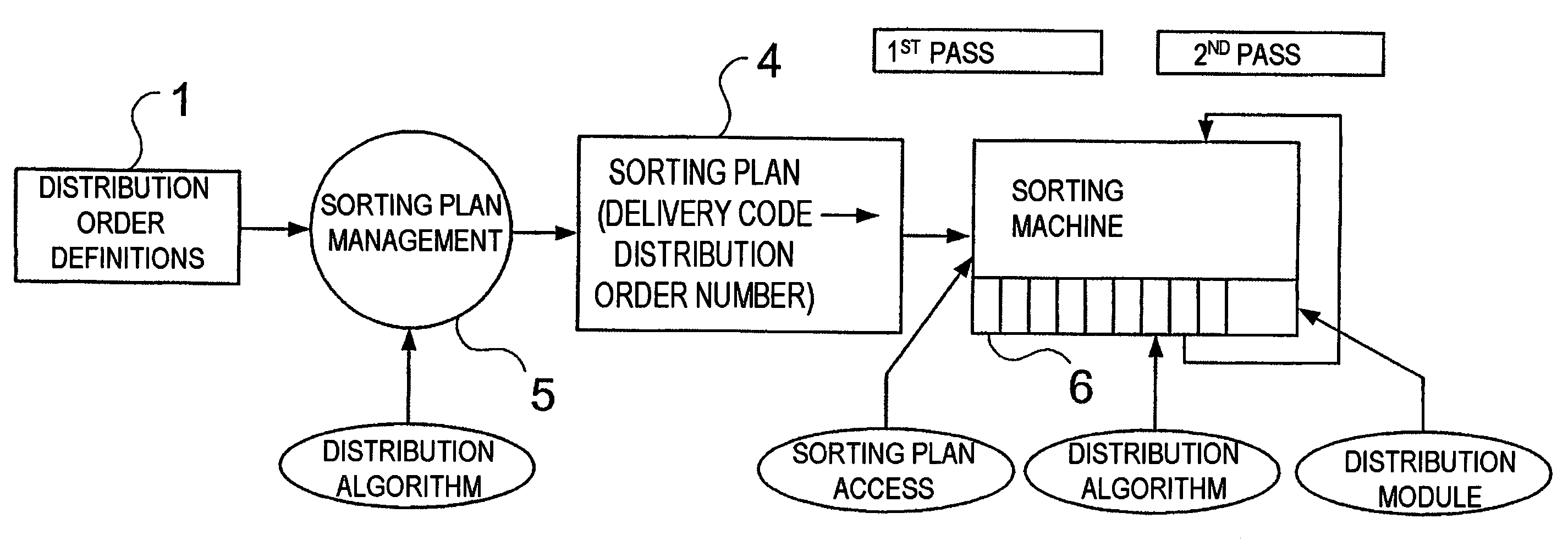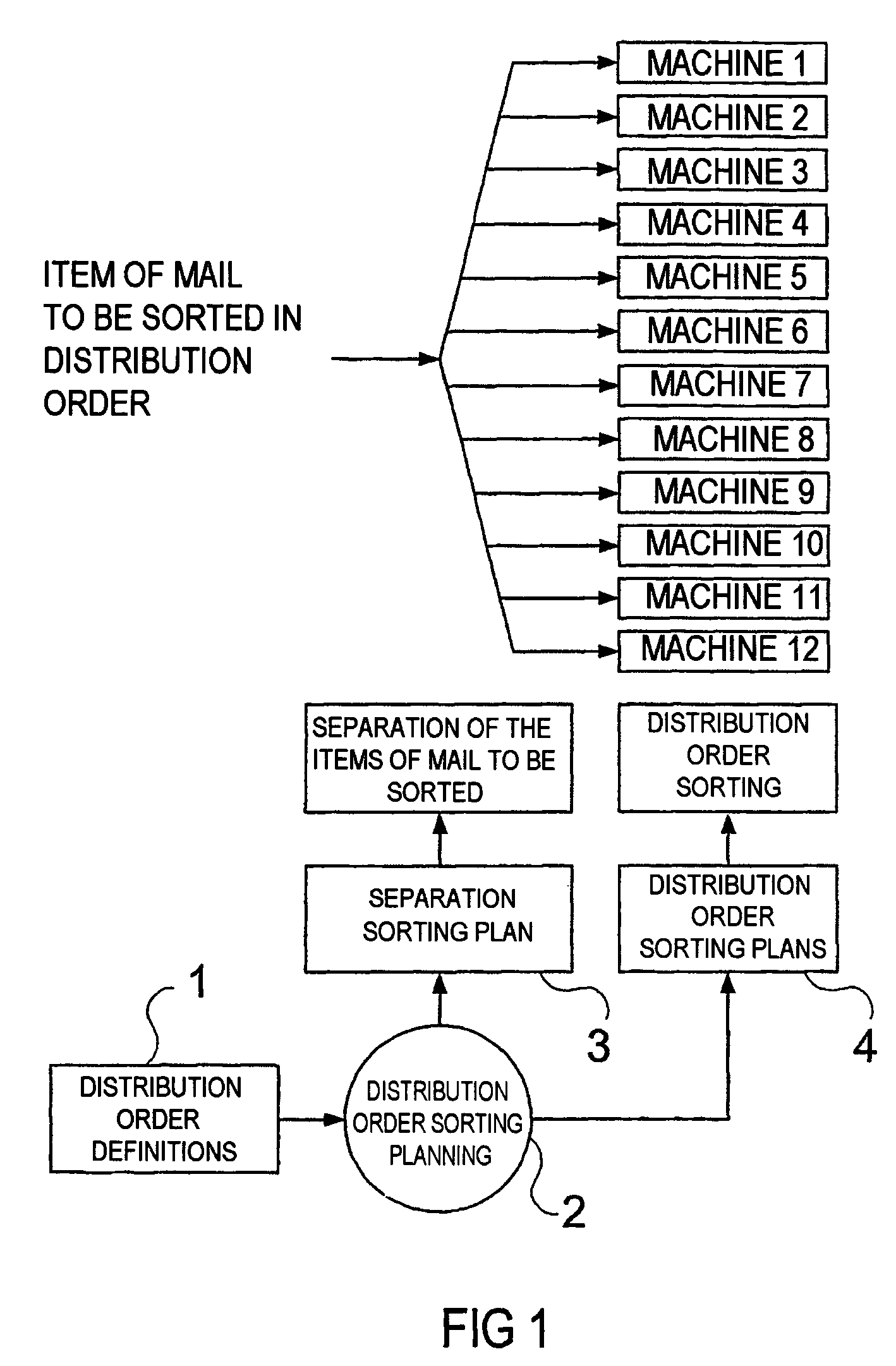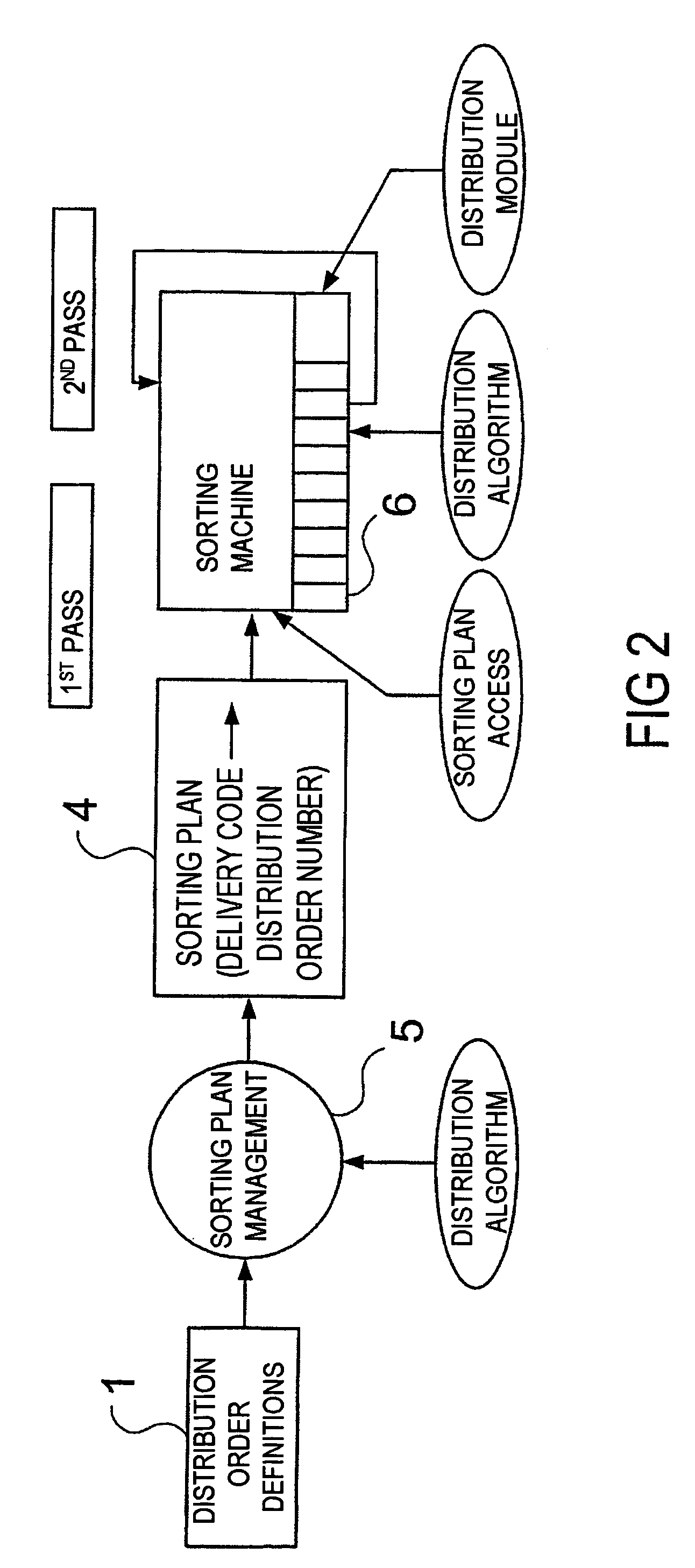Method for sorting in a distribution order
- Summary
- Abstract
- Description
- Claims
- Application Information
AI Technical Summary
Benefits of technology
Problems solved by technology
Method used
Image
Examples
Embodiment Construction
[0036]FIG. 1 depicts the starting situation of a complex sorting system. The distribution order definitions 1, called the distribution order below, are derived from a database-supported system, and contain the assignment of the destination code information to distribution order points and the quantities of items of mail to be expected per distribution order point. In the distribution order sorting planning 2, the predefined distribution orders are distributed to the available sorting machines. This planning is carried out, firstly, in accordance with logical criteria set by the operator, secondly in accordance with loading criteria of the machines. In practice, this means that the planner attempts to match the logistical criteria of the operator to the existing machine park and, for this purpose, needs a tool which, during the planning, can continuously check whether the capacity limit of one or more machines has already been reached or not. The result of this planning are the distr...
PUM
 Login to View More
Login to View More Abstract
Description
Claims
Application Information
 Login to View More
Login to View More - R&D
- Intellectual Property
- Life Sciences
- Materials
- Tech Scout
- Unparalleled Data Quality
- Higher Quality Content
- 60% Fewer Hallucinations
Browse by: Latest US Patents, China's latest patents, Technical Efficacy Thesaurus, Application Domain, Technology Topic, Popular Technical Reports.
© 2025 PatSnap. All rights reserved.Legal|Privacy policy|Modern Slavery Act Transparency Statement|Sitemap|About US| Contact US: help@patsnap.com



